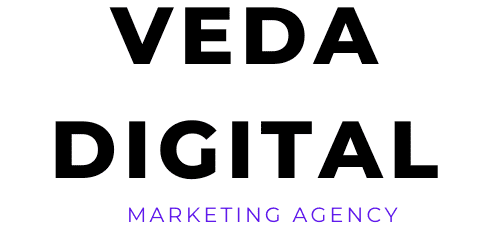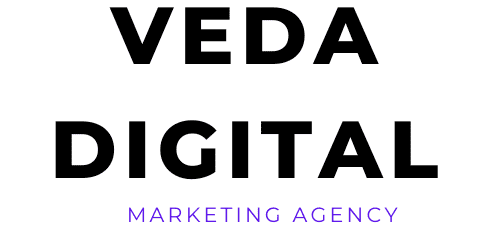Top 5 Ways to Generate Leads Using Facebook Ads in 2025
Introduction:-
If you're looking to grow your business, Facebook Ads remain one of the most effective tools for generating high-quality leads. With over 2.9 billion monthly active users and advanced targeting capabilities, Facebook offers unmatched potential to connect with your ideal customers. In this blog, we’ll explore five powerful strategies to generate leads using Facebook Ads, complete with key points, examples, and actionable insights.
1. Leverage Facebook Lead Ads for Seamless Data Collection
Facebook Lead Ads are designed specifically for lead generation. They allow users to submit their contact information directly within the Facebook platform, without being redirected to an external site. This frictionless experience increases conversion rates and simplifies the process for both users and marketers.
🔑 Key Points:
- Pre-filled forms: Facebook auto-populates user data (name, email, phone) from profiles.
- Customizable questions: Tailor forms to collect relevant information (e.g., job title, budget).
- CRM integration: Sync leads directly with tools like HubSpot, Mailchimp, or Salesforce.
- Mobile-friendly: Optimized for mobile users, who make up the majority of Facebook traffic.
Example:
A fitness coach offers a free 7-day meal plan in exchange for email sign-ups via a Lead Ad. The form is short, mobile-optimized, and integrated with their email marketing platform for follow-up.
2. Use Precision Targeting to Reach the Right Audience
Facebook’s targeting tools allow you to zero in on your ideal customer based on demographics, interests, behaviors, and even life events. This ensures your ads are seen by people most likely to convert.
🔑 Key Points:
- Custom Audiences: Retarget users who visited your website or engaged with your content.
- Lookalike Audiences: Reach new users similar to your best existing customers.
- Detailed targeting: Filter by age, gender, location, job title, interests, and more.
- Exclusion filters: Avoid showing ads to irrelevant or already converted users.
Example:
An online course creator targets users aged 25–40 who are interested in “digital marketing,” “SEO,” and “online business.” They exclude current subscribers to avoid redundancy.
3. Create Scroll-Stopping Ad Creatives and Copy
Your ad needs to stand out in a crowded feed. That means using eye-catching visuals and persuasive copy that speak directly to your audience’s pain points and desires.
🔑 Key Points:
- High-quality visuals: Use bright colors, bold text overlays, and engaging imagery.
- Clear value proposition: Focus on benefits, not just features.
- Strong CTA (Call to Action): Use action-oriented phrases like “Download Now” or “Claim Your Free Trial.”
- Mobile-first design: Ensure your creatives look great on smartphones.
Example:
A SaaS company runs a video ad showing how their tool saves time for small businesses. The CTA reads “Start Your Free Trial Today,” and the thumbnail features a stopwatch and smiling entrepreneur.
4. Retarget and Nurture Leads with Follow-Up Ads
Not every lead converts immediately. Retargeting allows you to re-engage users who interacted with your ads or visited your site but didn’t take action. This keeps your brand top-of-mind and increases the likelihood of conversion.
🔑 Key Points:
- Retargeting ads: Show tailored messages to warm leads.
- Sequential messaging: Guide users through the buyer journey with layered content.
- Messenger ads: Start conversations and answer questions in real time.
- Email follow-ups: Combine Facebook ads with email marketing for better results.
Example:
A real estate agent retargets users who viewed property listings with ads offering a free consultation. The ad includes testimonials and a link to schedule a call.
5. Optimize and Scale with Data-Driven Insights
Lead generation is an ongoing process of testing, learning, and improving. Facebook’s analytics tools provide deep insights into what’s working and what’s not, allowing you to refine your strategy and scale successful campaigns.
🔑 Key Points:
- Conversion tracking: Measure form submissions, clicks, and purchases.
- Split testing: Compare different ad versions to find top performers.
- Budget optimization: Allocate more spend to high-converting ads.
- Frequency capping: Avoid ad fatigue by limiting how often users see your ads.
Example:
An e-commerce brand runs A/B tests on two ad creatives—one with a product demo video and one with a static image. The video ad performs better, so they increase its budget and expand targeting.
Bonus Tips for Maximizing Lead Generation
- Offer irresistible lead magnets: eBooks, webinars, discount codes, free trials.
- Keep forms short and simple: More fields = lower completion rates.
- Use “Optimize for Higher Intent” setting: Facebook prioritizes users more likely to convert.
- Refresh creatives regularly: Prevent ad fatigue and maintain engagement.
- Follow up quickly: Respond to leads within 24 hours to maintain momentum.
Final Thoughts
Generating leads with Facebook Ads isn’t just about running campaigns—it’s about building a strategic ecosystem that attracts, engages, and converts your ideal customers. By combining Lead Ads, targeted audiences, compelling creatives, retargeting, and data optimization, you can create a sustainable lead generation engine that fuels your business growth.
Whether you're a startup, freelancer, or established brand, these five strategies will help you maximize ROI and build a pipeline of high-quality leads in 2025 and beyond.
Take your first step a website which is your authority to connect with people as you are landing here and learn some basic things to do so.
JOIN THIS PROGRAM, You never regret.
